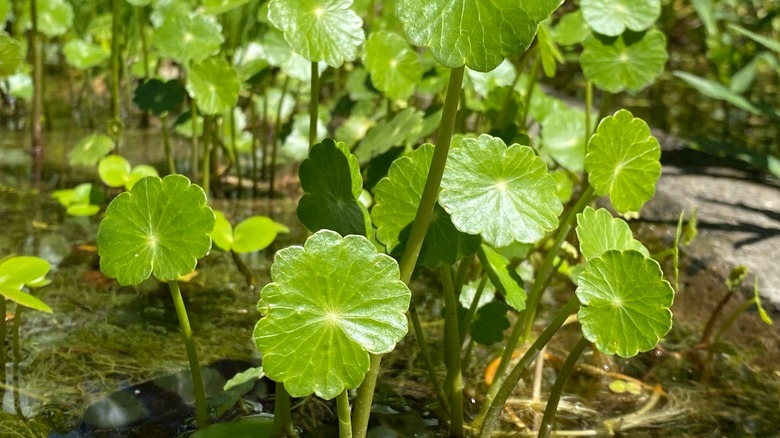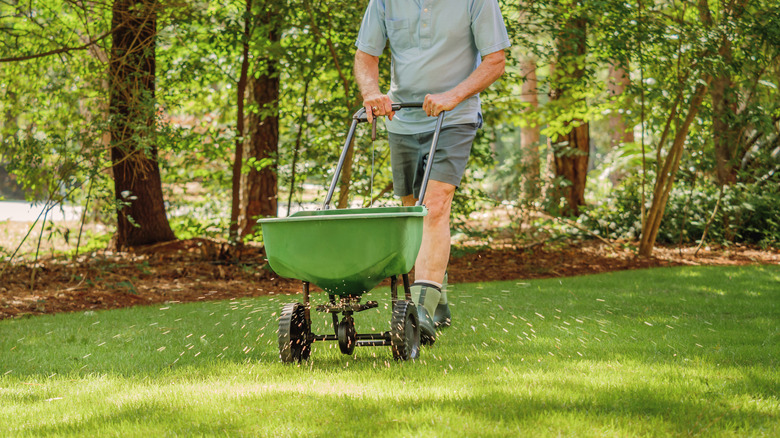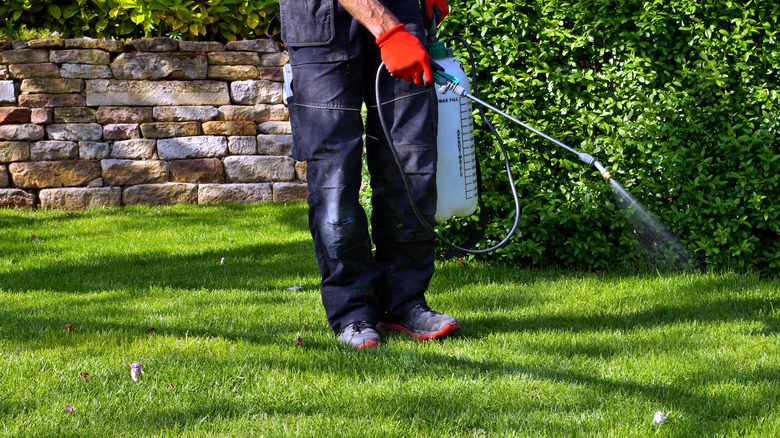How To Prevent Dollarweed From Taking Over Your Lawn If You Live By Water
Despite its attractive, glossy leaves, dollarweed (Hydrocotyle Spp.) has gained a reputation as an invasive plant commonly found in wet, muddy areas near the coastline or other water sources. While it is most often seen in St. Augustine tuft, it can also take over other lawn varieties like Bermuda and centipede. It is often referred to as pennywort due to its leaves, which are 1 to 2 inches wide and have scalloped edges, resembling tiny lilypads.
Dollarweed is sometimes mistaken for dichondra, which has similar rounded green leaves. However, dollarweed has a stem that is centered on the leaf, while dichondra's stem is located at the leaf's edges. This broadleaf perennial typically grows to a maximum height of 6 inches and produces white flowers in late summer. Once dollarweed has established itself, removing it can be challenging without resorting to chemical weed control methods. Therefore, it is advisable to take preventative measures, such as improving drainage and reducing the watering frequency, to minimize the risk of a dollarweed invasion.
Using cultural management practices to prevent dollarweed
As mature pennyworts cannot be easily eliminated and can remain dormant in the soil for up to two years, the best way to prevent dollarweed from spreading in your lawn is to improve soil drainage. Cultural practices such as topdressing with mulch and aerating your lawn can help fix moisture issues. If these methods are not effective, installing a French drain in your yard is a great option. Overwatering can worsen drainage issues, so it is important to limit watering to around 1 to 1.5 inches per week to keep dollarweed under control.
Improving tuft maintenance and lawn care is another effective way to prevent weed growth. While replacing your grass with more adapted cultivars is ideal, it may not be feasible for everyone. Instead, focus on fertilizing your lawn adequately at least two to three times a year to maintain lush grass. Additionally, regularly mowing your tuft to an average height of 2 inches or more (according to your grass type) can prevent dollarweed from crowding out dense grass growth.
Other methods to control dollarweed
If cultural practices are unsuccessful in preventing the growth of dollarweed, you should manually remove the floater plant without dropping any of its seeds or rhizomes to control its spread. Alternatively, you can pour boiling water over the plant to eliminate it, taking care not to affect the surrounding vegetation. Another natural option is to spray baking soda on the dollarweed and leave it overnight, ensuring that your grass remains unaffected. Other natural methods include using a sugar solution or white vinegar on the plant's foliage to permanently kill it.
If organic methods fail, chemical control methods such as weed killers and herbicides can be used. For example, you can apply Atrazine during the fall season to centipede and St. Augustine grass to eliminate dollarweed, including its seeds. However, avoid using these chemicals on newly sodded lawns as they can hinder seed germination. Glyphosate (Roundup) or an imazaquin-containing herbicide can also be spot-treated on pennyworts.


